Do you want to make more money than ever this year?
Then you need to create a system for consistently generating high-quality leads.
And that’s exactly what we are going to discuss today:
- What is a lead generation funnel?
- How to build a lead generation funnel?
- How to generate more high-quality leads?
Remember:
More leads -> More sales -> More Money.
So are you ready to take your business to the next level?
Continue reading…
What Is a Lead?
A lead is a potential customer who has:
- Expressed an interest in your product or service.
- Given you their contact details (typically an email address).
Note that it’s the latter that makes a lead.
Someone who has visited your website has expressed an interest in your product by doing so but they can’t be considered a lead until you have their contact details.
What Is Lead Generation?
Lead generation is the process of converting potential customers into leads by persuading them to give you their contact details.
The most common lead generation strategy used by online businesess is offering a freebie in exchange for the potential customer’s email address.
Companies that sell high-touch products that require a salesperson to close the deal often ask for other information in addition to the email address (e.g. a company name, a job title, business size, phone number, etc.).
This additional information helps the sales team prioritize high-quality leads that are more likely to convert to paying customers.
However, if you sell a low-touch product that can be sold via email, you should probably stick to asking either name and email address or just the email address. Keep in mind that the more information you request, the less likely people are to give it to you.
There are also other lead generation strategies that can work well, most notably cold outreach such as cold calling and call email.
Cold outreach can be a great way to get your business off the ground. For example, Justin McGill, the founder of LeadFuze, used cold email to grow his company to $30,000 in monthly recurring revenue in just one year.
However, calling up or emailing potential customers is hard to scale, which is why in this article we are going to focus on building an automated lead generation funnel.
What Is a Lead Generation Funnel?
Okay, so before we get into lead generation funnels, it’s important to understand sales funnels.
A sales funnel is the process that a person goes through from the moment they become aware of your offer to the moment that they purchase your product or service.
Here’s the big picture of any sales funnel:
- Top of the sales funnel (ToFu): Target audience
- Middle of the sales funnel (MoFu): Potential customers
- Bottom of the sales funnel (BoFu): New and existing customers

Every business in existence uses some sort of a sales funnel:
- They catch the attention of the people in their target audience.
- They get the potential customers interested in their product or service.
- They persuade those potential customers to buy their product or service.
However, not all sales funnels are made equal, so if you want to have the best shot at building a successful online business, you should follow a proven sales funnel template.
We believe that the template that works best is the Value Ladder sales funnel that was created by our co-founder Russel Brunson. It’s what he used to take ClickFunnels from zero to $100 million in revenue in just three years!
Here’s how the Value Ladder sales funnel looks like:

The Value Ladder has four stages:
- Bait. You offer the potential customer a freebie in exchange for their email address.
- Frontend. You offer the potential customer your least expensive and least valuable product.
- Middle. You offer the customer a more expensive and more valuable product.
- Backend. You offer the customer your most expensive and most valuable product.
That way, as they are progressing through your sales funnel, they are receiving more value at each stage. They are climbing a value ladder so to speak.
Here’s an example of one of our Value Ladder sales funnels that we use here at ClickFunnels:

So what is a lead generation funnel?
A lead generation funnel is the first stage of your sales funnel.
Here’s how it looks like:
- You catch the attention of a potential customer.
- You offer them a lead magnet that they can’t resist.
- You ask for their contact information in exchange for that lead magnet.
So a lead generation funnel begins with the potential customer becoming aware of your company and it ends with them giving you their email address in exchange for the freebie.
In other words, a lead generation funnel is the Bait stage of the Value Ladder sales funnel.
It’s important to remember that a lead generation funnel doesn’t exist in isolation and to always view it in the context of the entire sales funnel.
Keep in mind that whatever happens at the Bait stage ripples through the entire Value Ladder sales funnel all the way to your Backend Offer.
Impress the potential customer at the Bait stage and they will be more open to your subsequent offers.
Let them down and they will be like “No thanks”.
How To Create a Lead Generation Funnel
So how can you create an effective lead generation funnel?
Here’s a three-step process:
- Create a super valuable lead magnet.
- Create a lead magnet landing page.
- Drive traffic to the lead magnet landing page.
Let’s take a closer look at each of these three steps.
Step #1: Create a Super Valuable Lead Magnet
A lead magnet is the aforementioned freebie that you offer in exchange for the potential customer’s email address.
It can be anything that the potential customer can either download to their device or access online.
It can also be a physical product, which is an advanced approach to lead magnets.
What matters is that:
- Your lead magnet offers a solution to a problem that the potential customer is struggling with.
- That problem is either the same or related to the one that you address with your products or services.
That way, not only do you provide the potential customer with an incentive to share their email address but also give them a taste of the value that they can expect from your premium products.
For example:
Matthew Hussey, a world-renowned dating coach that has a YouTube channel with over 2 million subscribers, offers a variety of lead magnets to his potential customers.
One of those lead magnets is a free guide that features nine texts that women can copy-paste and send to the guy they like.
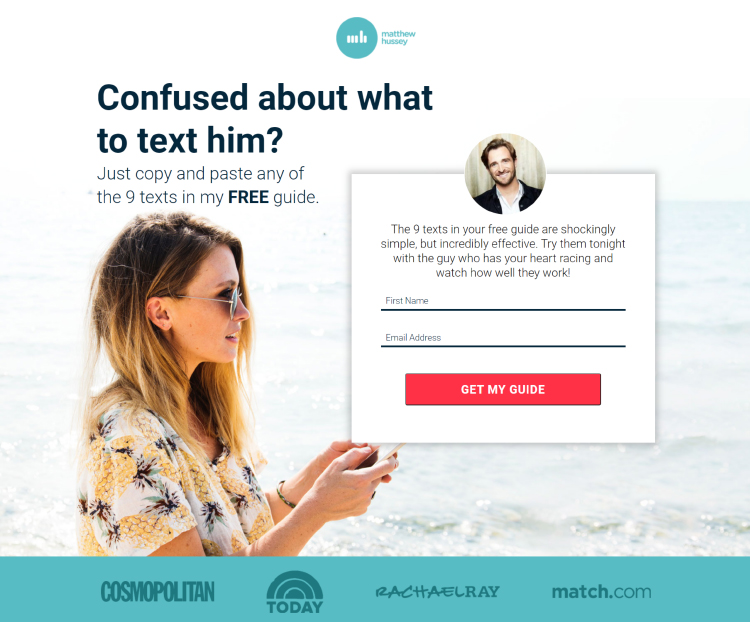
Matthew’s premium products include ebooks, online courses, and live events, such as:
- “What Men Want” ebook that explains seven secrets to pulling him closer instead of pushing him away.
- “How to Talk to Men” guide that provides 59 scripts for talking to men.
- “Attraction to Commitment” course that teaches women how to create the relationship that they have always wanted.
- “Get Him RunningBack to You (Or Get Over Him for Good)” online course that helps women get their exes back or move on after a breakup.
- “Love.Life” which is an exclusive online community.
- “The Matthew Hussey Retreat” which is a 6-day live event.
A woman who has downloaded the free “9 Texts” guide and benefited from it is likely to be open to Matthew’s subsequent offers because the lead magnet has proven to her that the guy knows what he’s talking about.
In fact, his “How to Talk to Men” guide that provides 59 more word-for-word scripts is an obvious product to pitch to convert that woman to a paying customer.
When you are brainstorming lead magnet ideas, look at your products and ask yourself how can you give people a free sample of the value you offer.
That will make it easy to convert those leads into paying customers later on.
The Key To Creating an Effective Lead Magnet
The most common mistake that entrepreneurs make when it comes to lead magnets is this:
They fail to provide enough value.
As we explained on Instagram:
People ARE NOT going to give you their contact information unless you give them something super valuable in return.
Want to create an effective lead magnet? Then make it so valuable that people would happily pay for it. Then give it away for free.
This seems obvious but there appears to be a psychological barrier that is preventing entrepreneurs from making their lead magnets truly amazing:
It feels weird to invest so much time, energy, and money into something that you intend to give away for free.
But you need to overcome this if you want to create an effective lead magnet. Don’t see it as some throwaway freebie. Approach it as you would approach creating a premium product.
Give your potential customers the respect they deserve. Offer them something that is genuinely valuable.

Most Popular Lead Magnet Types
So what exactly can you offer as a lead magnet?
Let’s take a look at the most popular lead magnet types…
A Cheat Sheet
A cheat sheet is a PDF document that provides a summary of how to achieve a specific goal.
This type of lead magnet is probably the easiest to produce because cheat sheets usually are only a few pages long.
For example:
Jon Morrow, a popular blogger and a world-renowned writing coach, offers a cheat sheet for becoming a freelance writer as one of his lead magnets.
This makes perfect sense given that he sells various products that help writers make money.

An Ebook
It’s probably safe to say that ebooks are the original lead magnets. Remember the early 2010s when seemingly every blogger was offering one?
However, since people are so used to them by now, they are also the most skeptical of them.
Everyone has downloaded some ebook that they then never read. And that’s what comes to the potential customer’s mind when you offer them a free ebook. They think: “Why even bother?”.
That’s why you need to make sure that your ebook is so jam-packed with value that they wouldn’t be able to resist it despite this skepticism.
For example:
One of the lead magnets that we offer is Russel Brunson’s “The Marketing Secrets Blackbook”.
All you need to do to get a free digital copy is to provide an email address and click “Get Access Now”.
It isn’t one of those ebooks that should be more accurately called epamphlets. It’s a 292 pages PDF document.
More importantly, it contains 99 marketing secrets that Russel used to grow ClickFunnels to $100 million in annual revenue.
And you get all that knowledge for free. Sounds like a pretty good deal, doesn’t it?

A Report
Have resources for conducting original research?
Then you can compile research findings into a report and use it as a lead magnet.
This type of lead magnet has the additional benefit of passively generating backlinks that can help you rank higher on Google.
You see, freelance writers are required to use recent statistics in their articles, so they are always scouring the web for relevant data.
Of course, if they use a statistic, they then need to provide its source. And that means a backlink for you!
For example:
Every year Walker Sands conduct a consumer survey to learn more about the future of retail.
They then publish their findings in “The Future of Retail” report that people can download for free.

It’s probably safe to say that “The Future of Retail” reports are responsible for the vast majority of Walker Sands’ backlinks.
When you look at their backlink profile, out of their top five pages, three of them feature these reports.
This demonstrates that conducting original research and publishing your findings in a report is not only an effective lead generation strategy but also an investment in SEO.

A Case Study
Want to hear a dirty content marketing secret?
The vast majority of educational content that is available online was created by people who have never done whatever it is that they are now teaching you. And people are starting to catch on to this.
That’s why case studies are so valuable. Don’t tell me what to do, I can find that on Google myself. Better show me what you have accomplished. That’s much more interesting.
Moreover, if you offer a customer case study as a lead magnet, it also serves as social proof.
It makes people more likely to recognize you as an expert in your field and more open to the idea of paying for your products or services.
For example:
Chris von Wilpert runs an online education company called Content Mavericks where he teaches people to get more traffic with less content.
He offers a case study of how he made $100,000 from one blog post with $688.71 in ad spend. That post got him a job offer from Noah Kagan, the founder of AppSumo and Sumo.
By the way, note how Chris uses his connection with Noah as social proof.
People in his target audience are likely to be familiar with Noah and respect him for what he has accomplished. Surely Chris must be legit if such a successful entrepreneur offered him a job?

A Webinar
A webinar is a web seminar.
It’s an online event that can be either live or pre-recorded that teaches the attendees how to achieve a specific goal.
A webinar can be a super effective lead magnet because the perceived value of an event is higher than that of pretty much any other lead magnet type save for the video courses.
However, if you want to get the most out of webinars, you need to make sure that you provide a ton of value in them.
A webinar shouldn’t be just an extended pitch for your product or service. It needs to be structured in a way that allows even those who aren’t ready to buy from you to walk away having learned something valuable.
For example:
One of our lead magnets is a free webinar where Russel teaches you a secret funnel strategy.
It helps entrepreneurs learn which sales funnels work best for their businesses.

An Email Course
An email course is how you can package written content in a way that allows you to convey similar information as you would with an ebook but that has a higher perceived value.
Moreover, the delivery method is arguably more conducive to deriving value from the content because it’s easier to read one email per day than an entire ebook.
Plus, every time a potential customer opens an email from you and gets value out of it, they reinforce the habit of opening your emails. You are conditioning them to pay attention to you.
For example:
Brennan Dunn teaches freelancers how to make more money.
His lead magnet is an email course that explains how you can start or grow a freelancing business.
Interestingly, when you sign up for the course, you are asked to answer several questions that help Brennan better understand your particular situation.
He then uses marketing automation to personalize the course accordingly.
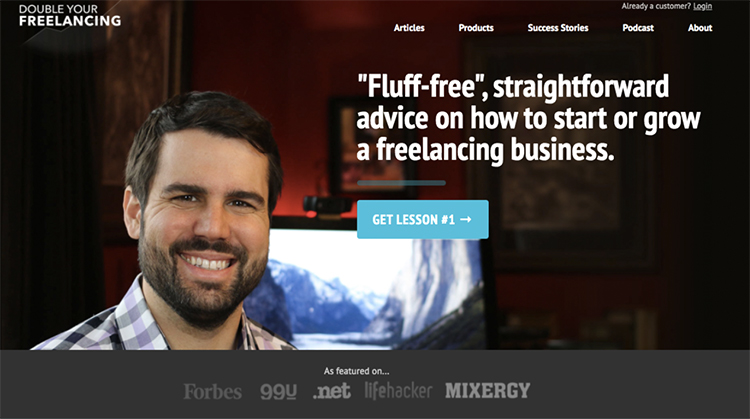
A Video
Are you comfortable in front of a camera?
Then consider shooting a video and offering it as a lead magnet.
Generally, video lead magnets have a higher perceived value than textual lead magnets, but can often be easier and quicker to produce (especially if we are talking about a single video).
For example:
Matthew Hussey offers a video about developing confidence as one of his lead magnets.
This ties in perfectly with his premium products that address the same issue.
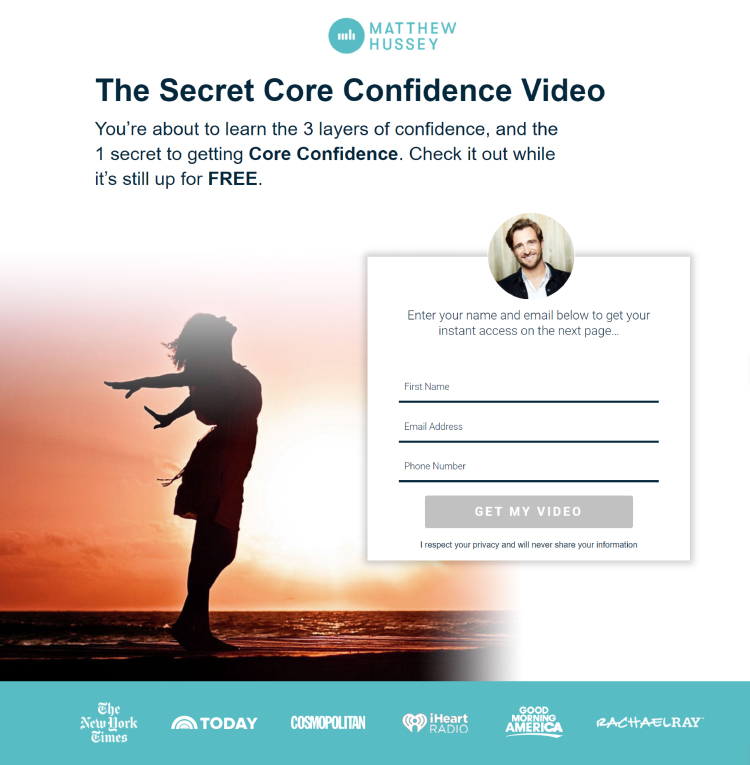
A Video Course
A video course is a lead magnet type that arguably has the highest perceived value in the eyes of the potential customer.
Presumably, that’s because a video course seems like a structured learning experience, plus people nowadays are used to paying for online courses.
So when you offer someone a video course for free, it immediately sounds like a great deal. Of course, you then have to deliver the value that you have promised!
For example:
Nick Stephenson, a bestselling author and a business coach that teaches writers how to promote their books, offers a free 7-day course called “$0 to $1k Per Month”as his lead magnet.
This course is an introduction to book marketing that covers everything from copywriting to generating traffic to book launches.
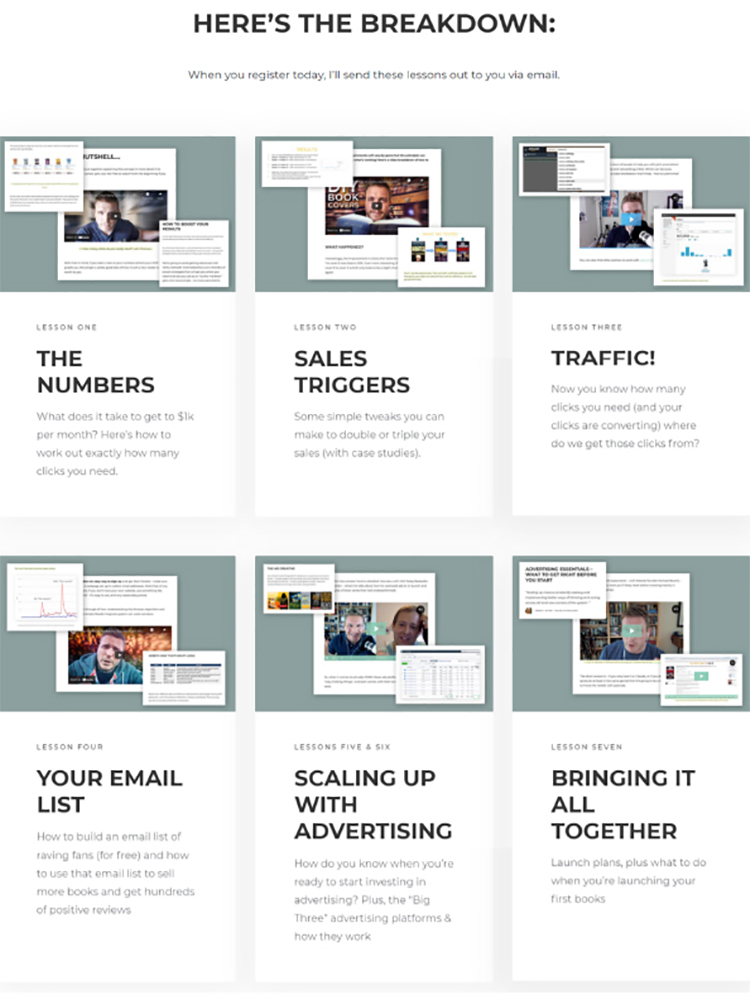
Advanced Lead Magnet: Physical Product
You might also want to consider offering a physical product as your lead magnet.
This is an advanced tactic that should be implemented carefully. You don’t want to go broke as a result of it.
One way to make the math work is to offer the product for free but ask the potential customer to pay for shipping. This means that they will need to provide their physical address as well.
Of course, you still have to figure out how to do this profitably, so make sure to track how much revenue you are bringing in this way.
For example:
Another one of our lead magnets is our co-founder Russel Brunson’s book“DotCom Secrets”.
However, instead of offering a digital version as you might expect, we offer a free physical copy. All you need to do is pay for the shipping.
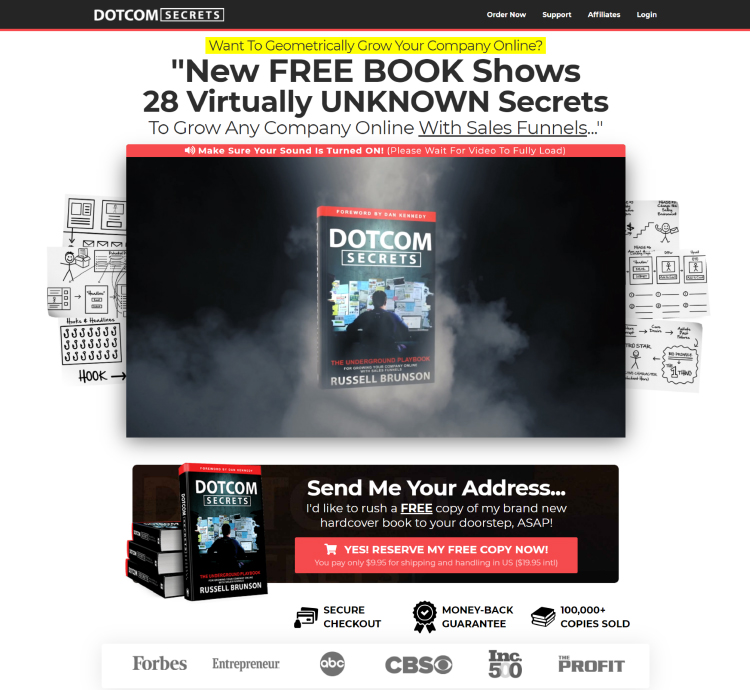
This helps us to generate high-quality leads because someone who is willing to invest in this book is likely to be more serious about building an online business than someone who merely downloads an ebook or registers for a webinar.
Of course, that is not to say that people who are interested in ebooks or webinars aren’t serious, it’s just that asking someone to pay $9.95 (within the US) or $19.95 (international) for shipping makes them stop and think. Do they really want this book?
Overcoming this barrier means that they are serious enough to invest money in their dream of building an online business, which means they are likely to be more open to investing in our software.
By the way, “DotCom Secrets” is a “real book” that is available on Amazon. It has over 2,500 reviews and a 4.7-star rating. This helps to increase its perceived value in the eyes of the potential customer.
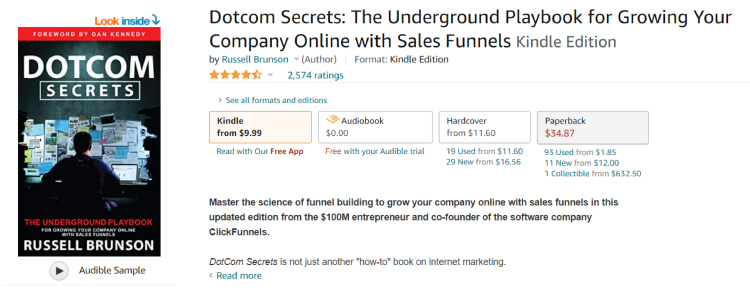
Step #2: Create a Lead Magnet Landing Page
Once you have your lead magnet, you need to create a landing page for it.
There are three types of lead magnet landing pages:
- Short-form landing pages (squeeze pages)
- Medium-length landing pages.
- Long-form landing pages.
Let’s take a closer look at each of them…
Short-Form Landing Pages (Squeeze Pages)
A short-form landing page, also known as a squeeze page, is the most basic type of landing page.
It should have these three key elements:
- A headline that conveys the main benefit of your lead magnet.
- An opt-in form where the potential customer can type in their email address.
- A call-to-action button.
There can also be a few sentences of copy but that is not necessary for a squeeze page.
Note that nowadays it is becoming increasingly popular to hide the opt-in form behind the call to action button so that it is only displayed once the potential customer clicks the button.
For example:
Yet another one of our lead magnets is an ebook called “The Funnel Hacker’s Cookbook” which features 22 of Russel’s top sales funnels.
As you can see, we are using a squeeze page as its landing page, with only the most important elements on it. It converts well, though!
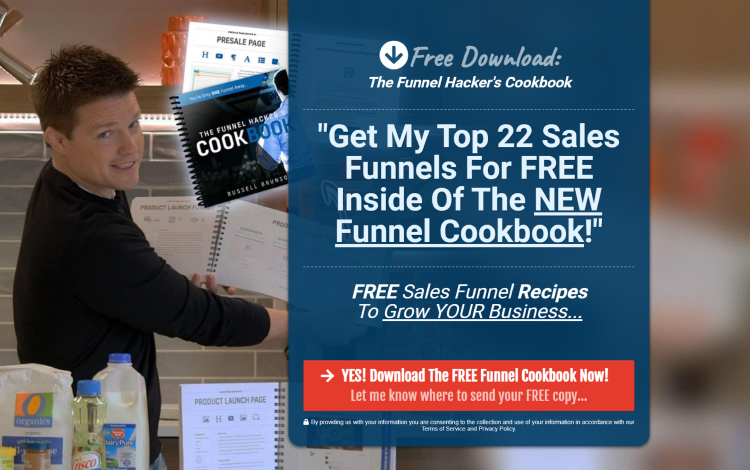
Medium-Length Landing Pages
Medium-length landing pages have all the key elements of a squeeze page but also tend to include:
- More copy.
- Social proof.
- Several call-to-action buttons.
There can also be additional elements such as a promotional video, a bio section, etc.
For example:
Remember Nick Stephenson’s “$0 to $1k Per Month” video course?
Its landing page is a great example of a medium-length landing page.
Above the fold you see:
- A headline that makes it clear what this course is all about.
- A subheadline that explains the offer in more detail.
- A paragraph of copy that further expands on the course.
- An image of the typewriter that gives the page a “writerly” vibe.
- A call-to-action button.

Below that there’s a promotional video:

Then you see a testimonial from a New York Times bestselling author Joanna Penn:

Then there’s more information about the course:

Below that there’s Nick’s bio where he establishes his credibility by mentioning his USA Today bestselling author status and sharing that he has helped over 75,000 authors grow their book sales:

Below the bio there’s a testimonial from another New York Times bestselling author, Russel Blake:

Then there’s the breakdown of the course:

Below that there’s information about the bonus course + a call to action button.
That’s right, you are getting not one but two courses for free!

Then there’s a testimonial from a well-known book marketing expert, Dave Chesson:
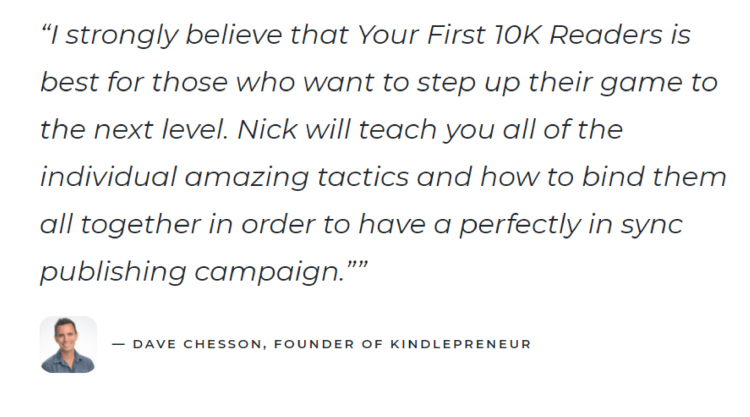
Then there’s more information about the course:

And below that there’s the last call to action:
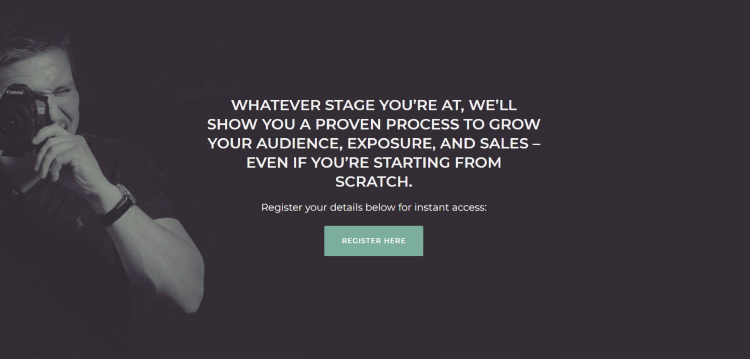
This page is the perfect length for a lead magnet of this type because it provides enough space for Nick to explain his offer + provide social proof.
Long-form landing pages
You might also want to consider creating a long-form landing page.
However, note that they make the most sense for advanced lead magnets that require more investment from the potential customer than merely providing their email address.
Otherwise, a long-form landing page might seem like an overkill because no one needs that much persuasion just to type in their email address.
For example:
Remember the “DotCom Secrets” book?
It’s the one that we offer for free to those who are willing to pay for the shipping. Its landing page is super long.
That’s because it’s a sales page. The book is free but the shipping isn’t. So we still need to sell the book to the potential customer.
Above the fold, you see:
- A headline.
- A subheadline.
- A promotional video.

Below the video there’s a banner that summarizes the offer and features a call to action. We also display media badges as social proof.

And then the sales copy begins.
Russel starts by sharing the ClickFunnels story:


He shares some social proof:

He then shifts the focus to the potential customer and introduces his book:

He follows this with more social proof:

He reassures the potential customer that entrepreneurs in all kinds of different industries have achieved great results with sales funnels:

Then there’s another call to action:

After that Russel explains what is covered in each section of the book:

This is followed by another call to action:

Then there are several video testimonial from the readers:

These testimonials are followed by another call to action:
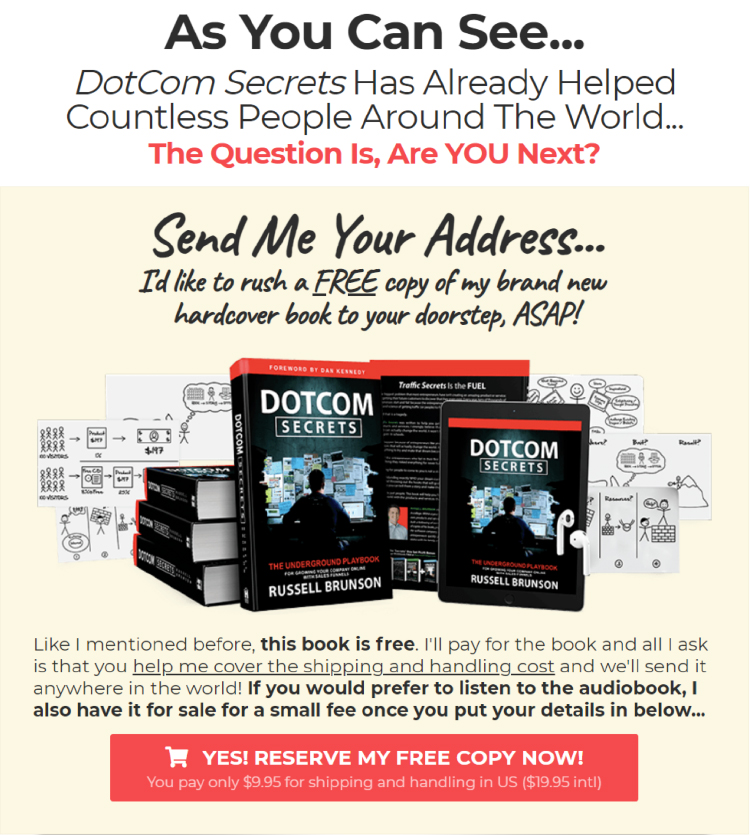
Then Russel lists the bonuses that you will get with the book:

This list of bonuses is followed by another call to action:

Does this offer seem too good to be true?
Russel reassures the potential customer that there’s no catch.

He then tells the potential customer that the number of free copies available is limited, so if they want one, they should order it now:

He follows that with a money-back guarantee which removes all the financial risk from the decision to order the book:

Then there’s a summary of everything you get: the book + all the bonuses.

Russel reminds the potential customer once again that the number of free copies available is limited:

Then there’s the P.S. section.
By the way, here’s a copywriting secret for you:
People tend to scroll down straight to the end of pages like that, so it makes sense to summarize the offer in the P.S. section.

And then there’s the final call to action:

This huge landing page helps us show the potential customer the value that they will get if they agree to cover the shipping costs.
Surely the book + all the bonuses are worth more than $9.95 or $19.95, right?
Note that even if the potential customer doesn’t read the entire page, which they probably won’t, a long-form landing page like this helps to increase the perceived value of the lead magnet.
Step #3: Drive Traffic to the Lead Magnet Landing Page
Now that you have your lead magnet landing page, it’s time to start driving traffic to it.
Here are several ways to do it…
Promote Your Lead Magnet on Your Blog
Have a blog?
Then you can direct that traffic to your lead magnet landing page. You can do so by adding a link to it at the bottom of each post.
Also, you might want to consider creating content upgrades for your top posts, which are lead magnets that build on a particular piece of content.
These tend to convert well because they are so relevant to the reader.
For example:
Sumo team has created a content upgrade for one of their top-performing posts.
The article is called “7 Must-Have Instagram Marketing Tools For Rapid Growth” and the lead magnet is an Instagram marketing swipe file.

Promote Your Lead Magnet on Social Media
Have a social media following?
Then why not share your lead magnet with your followers?
For example:
We have a link in our Instagram bio that leads to a page with a bunch of links to various lead magnets.

In our Instagram posts, we direct our followers to that link.

When they click on it, they are taken to this page:

And then they can go to the landing page of the lead magnet that they are interested in:

Promote Your Lead Magnet on YouTube
Have a YouTube channel?
Then you should promote your lead magnet to your subscribers.
For example:
Vanessa Lau, a popular YouTuber and a business coach, displays a link to her lead magnet on her YouTube homepage.

When you click on it, you are taken to her lead magnet landing page:

On top of that, Vanessa constantly promotes her lead magnets in her videos but she does it in a way that seems natural by making a connection between the lead magnet and the subject of that video.
How To Generate More High-Quality Leads
It’s important to understand that not all leads are made equal.
There are two types of leads:
- High-quality leads that are likely to convert to paying customers.
- Low-quality leads that are unlikely to conver to paying customers.
You want to continuously optimize your lead generation strategy for lead quality. How can you do that?
Simple:
- See who is buying your products.
- Determine what these people have in common.
- Figure out how to attract more people like that.
Likewise, you should also analyze what the leads that did not convert to paying customers have in common, then exclude people like that from your lead generation campaigns.
Ultimately, lead generation isn’t about collecting email addresses, it’s about making sales.
That’s why you need to focus on the people who are most likely to convert to paying customers.
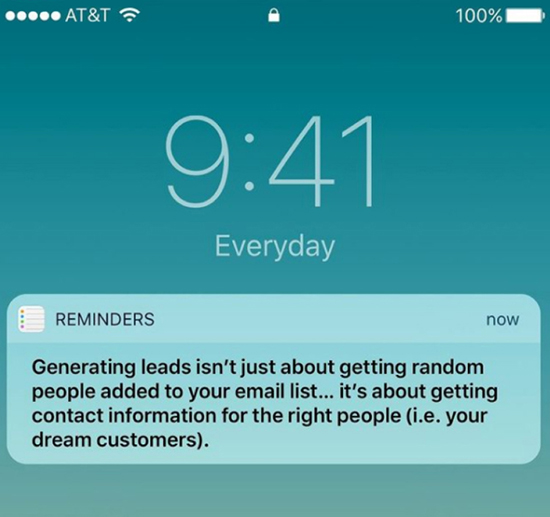
Conclusion
Want to build a thriving online business?
Then you can’t just sit back and wait for people to come to you.
You need to get out there, catch the attention of your ideal customers, and then persuade them to give you their contact details.
And once you have their email addresses, you need to convert those leads into paying customers and then into repeat customers. That’s what sales funnels are all about.
Want to learn how to create your first sales funnel?
Check out our 5 Day Challenge.
You will learn how to:
- Generate unlimited leads.
- Create your first lead magnet.
- Build your first sales funnel.
- Create a simple 6-email follow-up sequence.
- And launch your funnel!
…in just five days.
So don’t hesitate.

